Effects of Wollastonite Fiber and Styrene–Butadiene Latex Polymer on the Long-Term Durability of Cement-Based Repair Materials
Abstract
1. Introduction
2. Experimental Plan
2.1. Materials
2.2. Mix Proportion
2.3. Experimental Methods
2.3.1. Compressive Strength Test
2.3.2. Resistance to Chloride Ion Penetration Test
2.3.3. Alkali Resistance Test
2.3.4. Resistance to Carbonation Test
2.3.5. Water Absorption Test
2.3.6. Repeated Freezing and Thawing Test
3. Test Results
3.1. Compressive Strength Results
3.2. Resistance to Chloride Ion Penetration Results
3.3. Alkali Resistance Results
3.4. Resistance to Carbonation Results
3.5. Water Absorption Results
3.6. Repetitive Freezing and Thawing Results
4. Conclusions
- Every mixture satisfied the target compressive strengths of 20 MPa at 1 day and 45 MPa at 28 days. Adding SB latex polymer and wollastonite mineral fiber had adverse effects on the compressive strength, but the strength improved with time.
- Resistance to chloride ion penetration test confirmed that all mixes other than the wollastonite- and latex-free mix (M0L0) met the requirement of 1000 Coulombs or less. The wollastonite mineral fiber and SB latex polymer, used individually or together, decreased the permeability of the repair material. None of the mixes were affected by the saturated calcium hydroxide solution used in the alkali resistance test. The compressive strengths after exposure to the test solution were similar to those after 28 days. Exposure to alkaline solution did not significantly affect the 28-day compressive strength.
- The lowest compressive strengths were observed for mixes containing SB latex polymer, and the compressive strength of the M3L0 mix containing only wollastonite mineral fiber was similar to that of the wollastonite- and latex-free mix (M0L0).
- The presence of SB latex polymer improved resistance to carbonation through the formation of a latex film. The mix containing both wollastonite mineral fiber and SB latex polymer has excellent carbonation resistance (less than 10 mm).
- The addition of SB latex polymer or wollastonite mineral fiber decreased water absorption, and their combination exerted an even stronger effect. This was attributed to the fine wollastonite fibers and latex film filling and sealing the pores, thereby preventing water from permeating the structure.
- In the resistance to freezing and thawing test, all mixes met the requirement of a relative dynamic modulus of elasticity of 80% or more. The value of 88% obtained for the wollastonite- and latex-free M0L0 mix was improved to 90% or more when both components were present. Co-addition was more effective for improving the resistance to freezing and thawing due to the formation of a latex film, densification, and improved crack control of the structure by wollastonite.
- Co-addition of SB latex polymer and wollastonite mineral fiber was the most effective for improving the durability of ultra-rapid hardening cement-based repair material.
Author Contributions
Funding
Institutional Review Board Statement
Informed Consent Statement
Data Availability Statement
Conflicts of Interest
References
- Kim, S. Development of Artificial Crack Testing Method for Injection Type Repair Materials Used in Leakage Cracks of Concrete Structure in an Underground Environment; Seoul National University of Science and Technology: Seoul, Korea, 2017. [Google Scholar]
- Lee, J. Experimental Study on the Characteristics of Penetrating Surface Protection Materials to Promote Concrete Structure Durability; Seoul National University of Science and Technology: Seoul, Korea, 2006. [Google Scholar]
- Lee, H. Performance Evaluation for Initial-Crack Decrease of Polymer Mortar with Jute Fiber; University of Seoul: Seoul, Korea, 2012. [Google Scholar]
- Korea Institute of Civil Engineering. Development of Repair Rehabilitation Material Qualities and Methods Evaluation Standard of Reinforced Concrete Bridges; Ministry of Construction & Transportation: Sejong, Korea, 2003.
- Kwon, M.; Seo, H.; Lim, J.; Kim, J. The Properties of Durability and Strength of Fiber-Reinforced Polymer-Modified Mortars Using Eco-Friendly UM Resin. J. Korea Concr. Inst. 2013, 25, 313–320. [Google Scholar] [CrossRef][Green Version]
- Kong, T. Enhanced Durability Performance of Regulated Set Cement Concrete; Konkuk University: Seoul, Korea, 2005. [Google Scholar]
- Mathur, R.; Misra, A.K.; Goel, P. Influence of wollastonite on mechanical properties of concrete. J. Sci. Ind. Res. 2007, 66, 1029–1034. [Google Scholar]
- Soliman, A.M.; Nehdi, M.L. Effect of Natural Wollastonite Microfibers on Early-Age Behavior of UHPC. J. Mater. Civ. Eng. 2012, 24, 816–824. [Google Scholar] [CrossRef]
- Kumar, R. Wollastonite Mineral Fibre in Manufacturing of an Economical Pavement Concrete. In Proceedings of the Fourth International Conference on Sustainable Construction Materials and Technologies, Las Vegas, NV, USA, 7–11 August 2016. [Google Scholar]
- Lee, J. Development of High Early Strength Latex Modified Sprayed-Mortar; Kangwon National University: Chuncheon, Korea, 2007. [Google Scholar]
- Park, S. Properties of Latex Modified Concrete(LMC) by Binder Content and Effect on Chloride Ion Diffusion; Konkuk University: Seoul, Korea, 2008. [Google Scholar]
- Lee, J. Target Performance Based Optimum Mix Design and Performance Evaluation of Recycled Aggregate and Industrial by Products Concrete; Kongju National University: Yesan, Korea, 2013. [Google Scholar]
- Han, S. Evaluation on the Durability of the Concrete with Nano Level Ceramic Based Coatings; Daejin University: Pocheon, Korea, 2007. [Google Scholar]
- Kim, H. Development and Assessment of High-Performance Shotcrete for Permanent Support; Konkuk University: Seoul, Korea, 2007. [Google Scholar]
- Lim, J. A Study on the Development of High Durability Repair Materials for Emergency Maintenance of Port Facilities; Hanyang University: Seoul, Korea, 2017. [Google Scholar]
- Ministry of Construction & Transportation. Development of Anti-Bacteria and Anti-Insect Concrete and Mortar Using Microcapsule; Korea Concrete Institute: Seoul, Korea, 2003.
- Kwon, S.; Nishiwaki, T.; Choi, H.; Mihashi, H. Effect of Wollastonite Microfiberon Ultra-High-Performance Fiber-Reinforced Cement-Based Composites Based on Application of Multi-Scale Fiber-Reinforcement System. J. Adv. Technol. 2015, 13, 332–344. [Google Scholar]
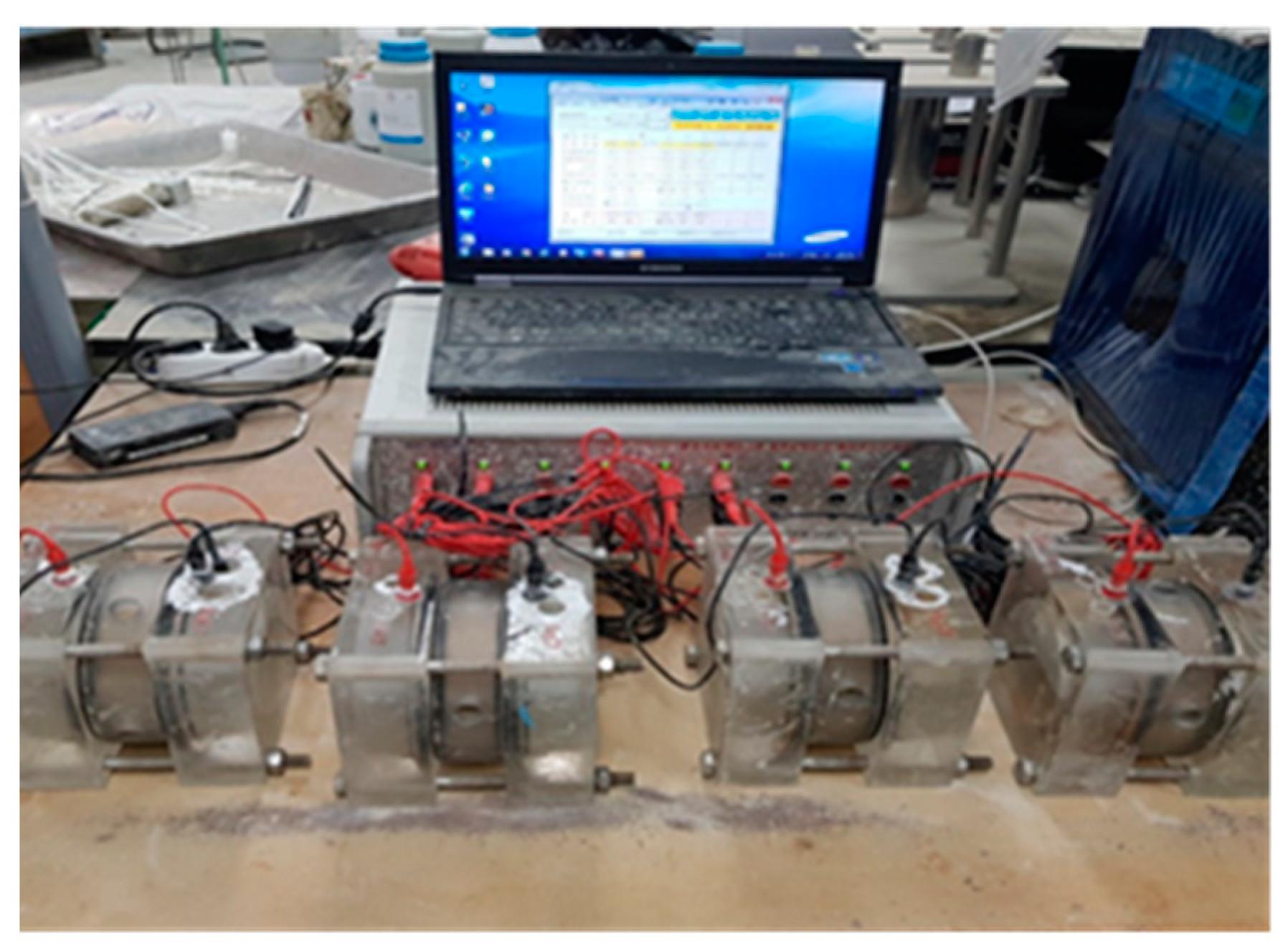
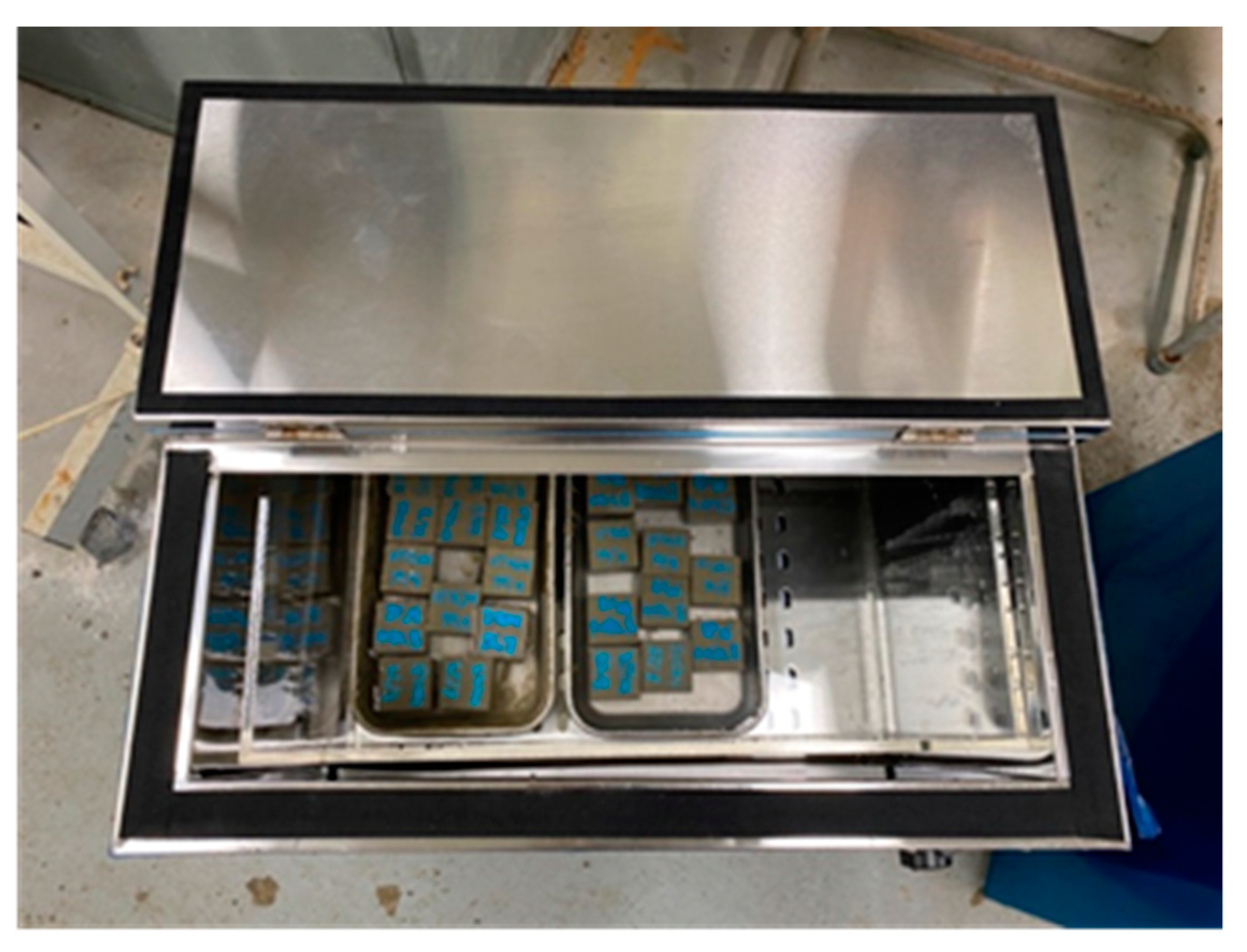
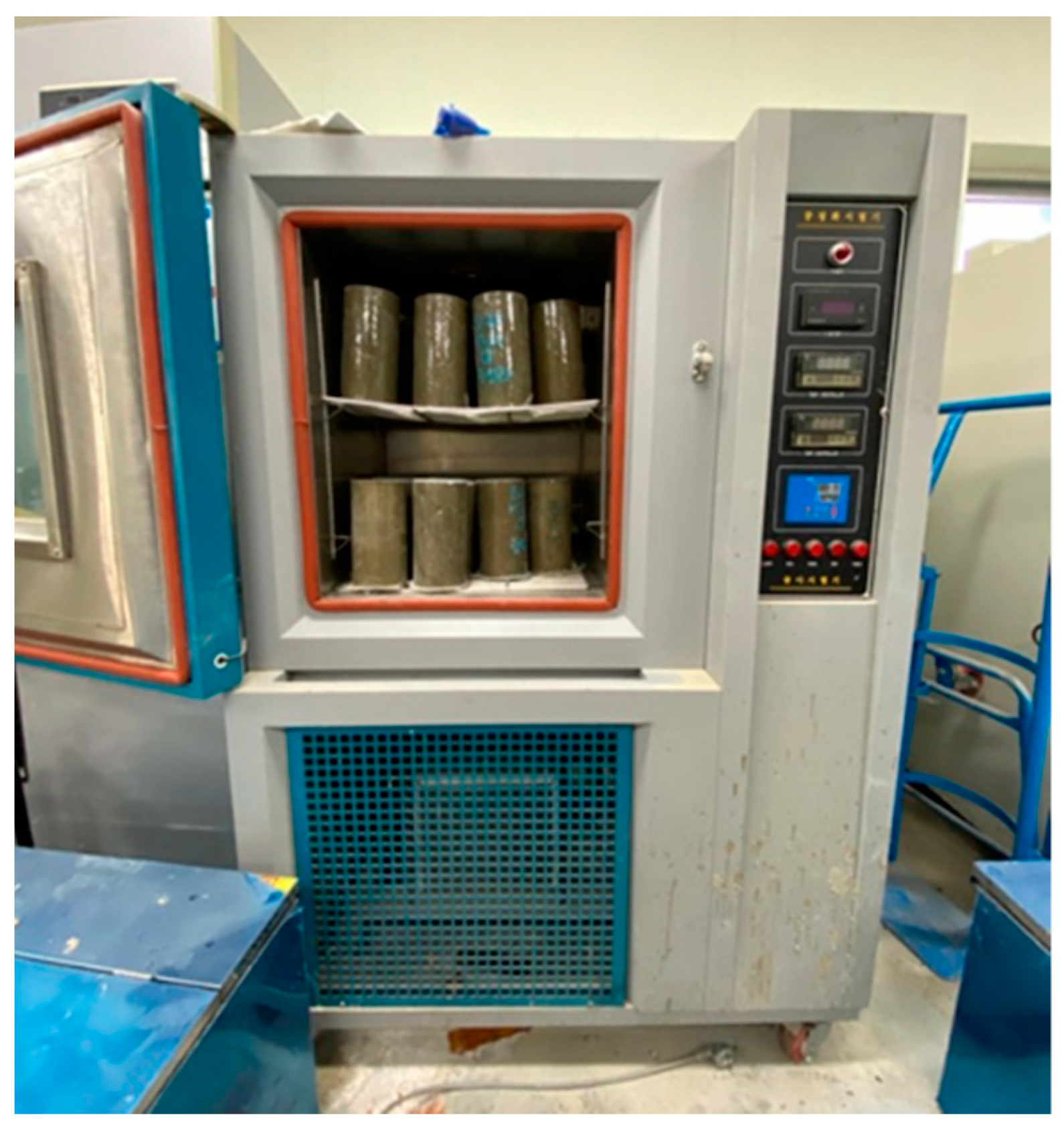
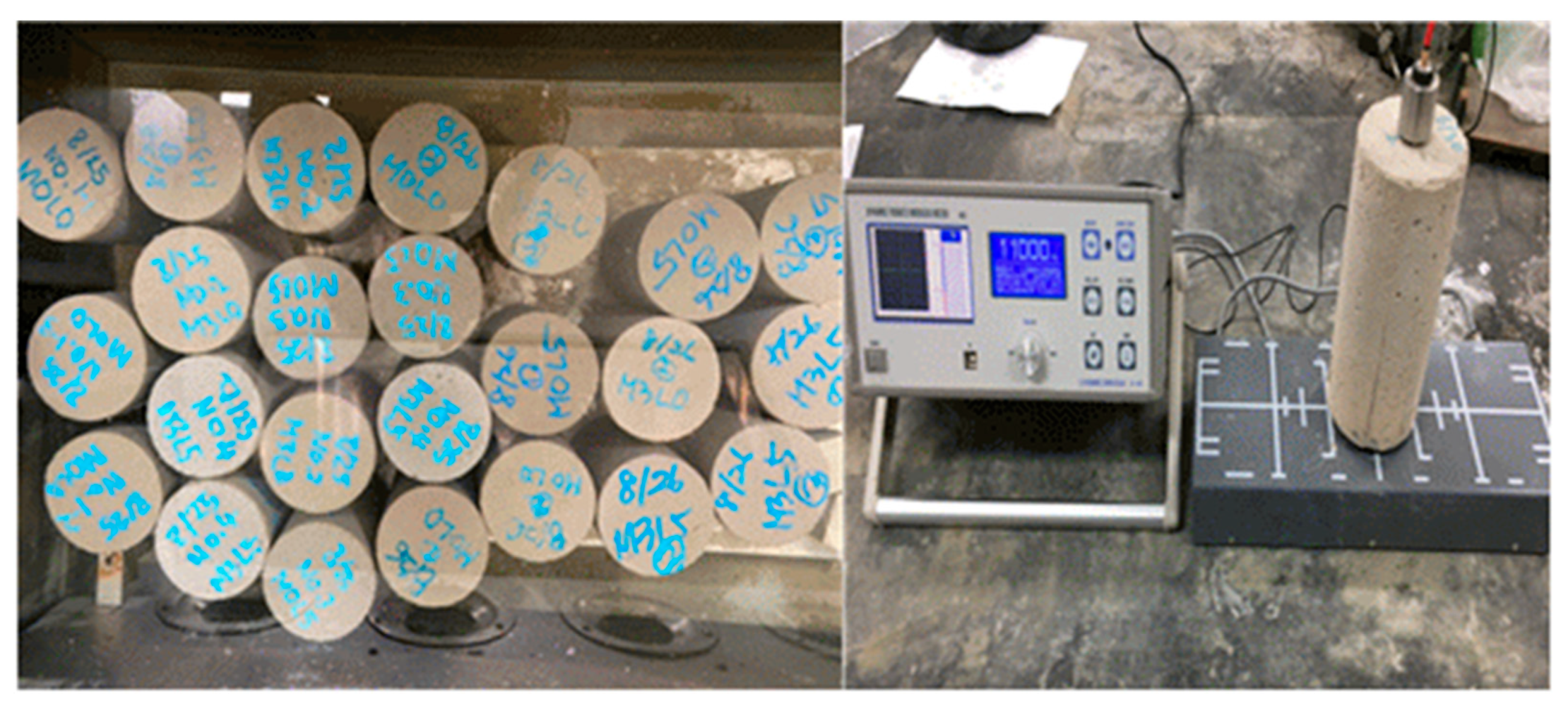
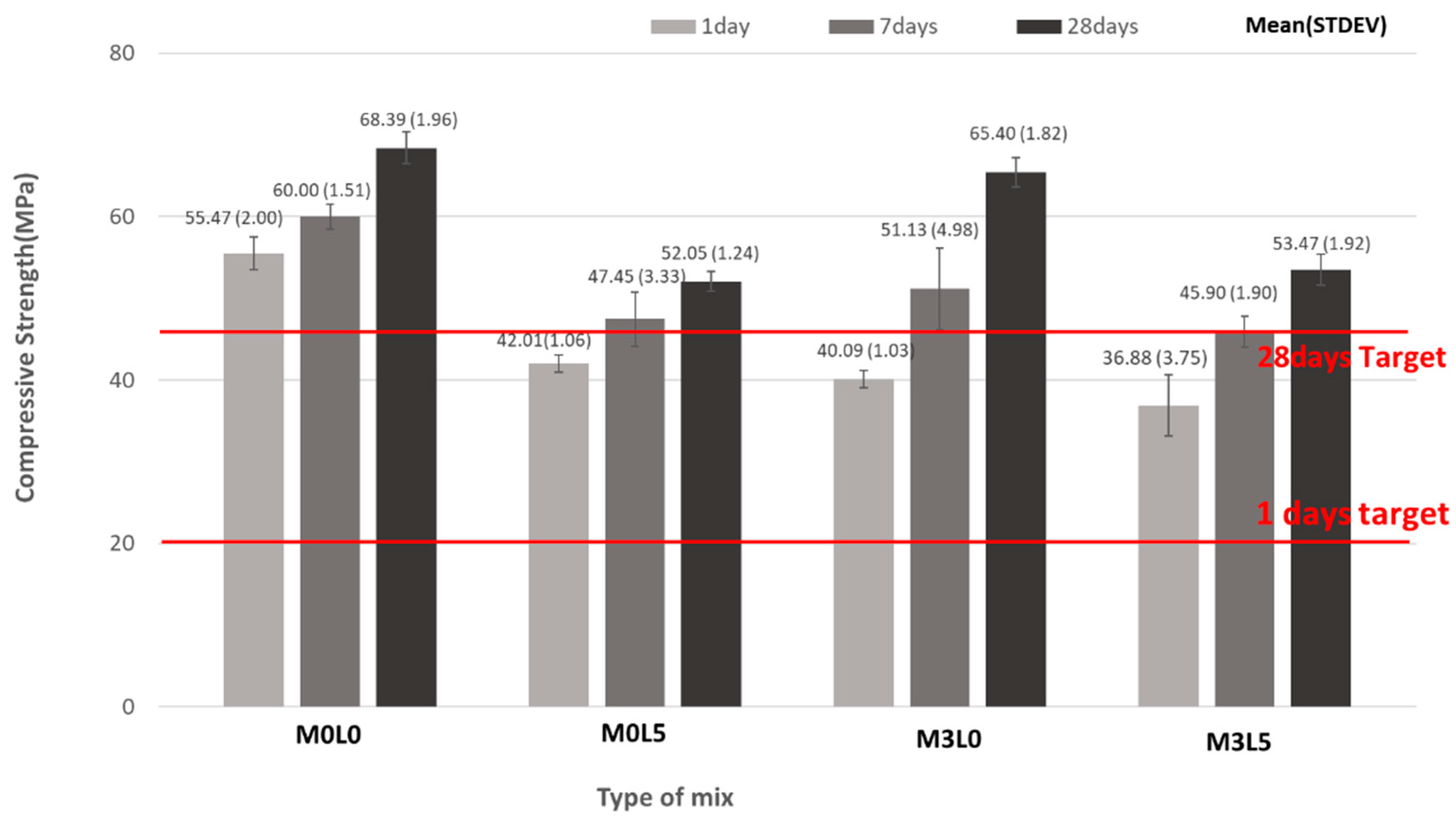
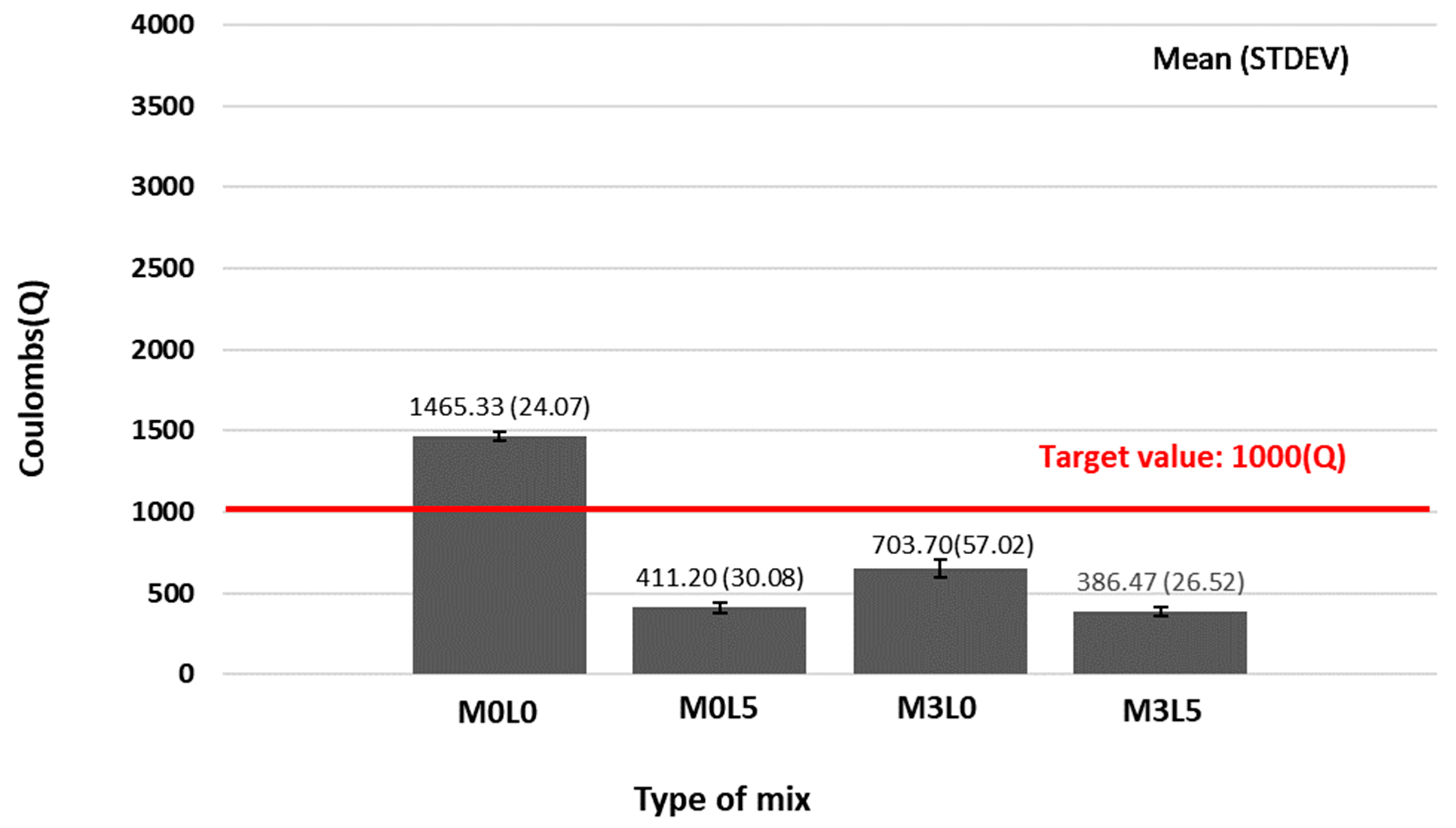
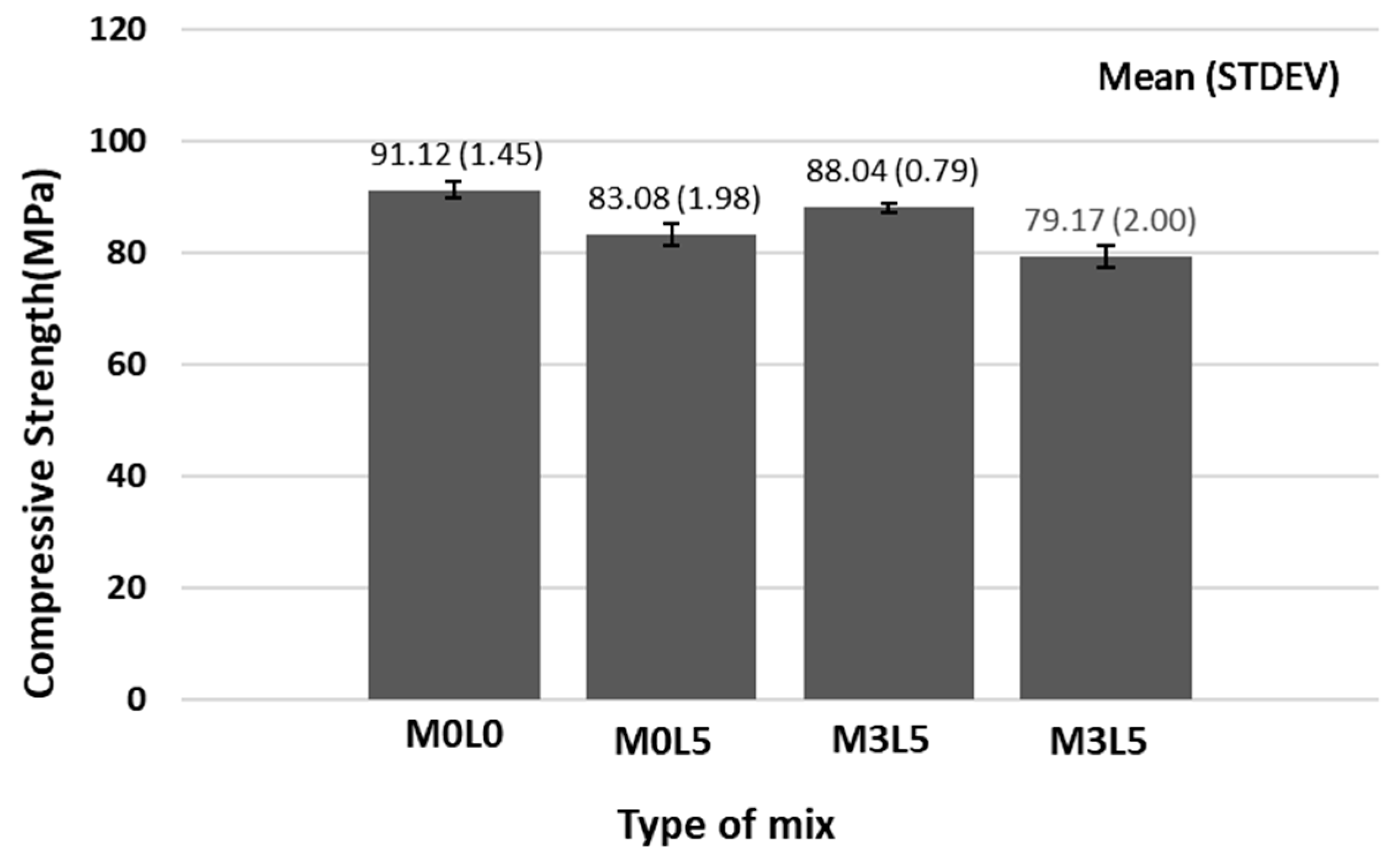
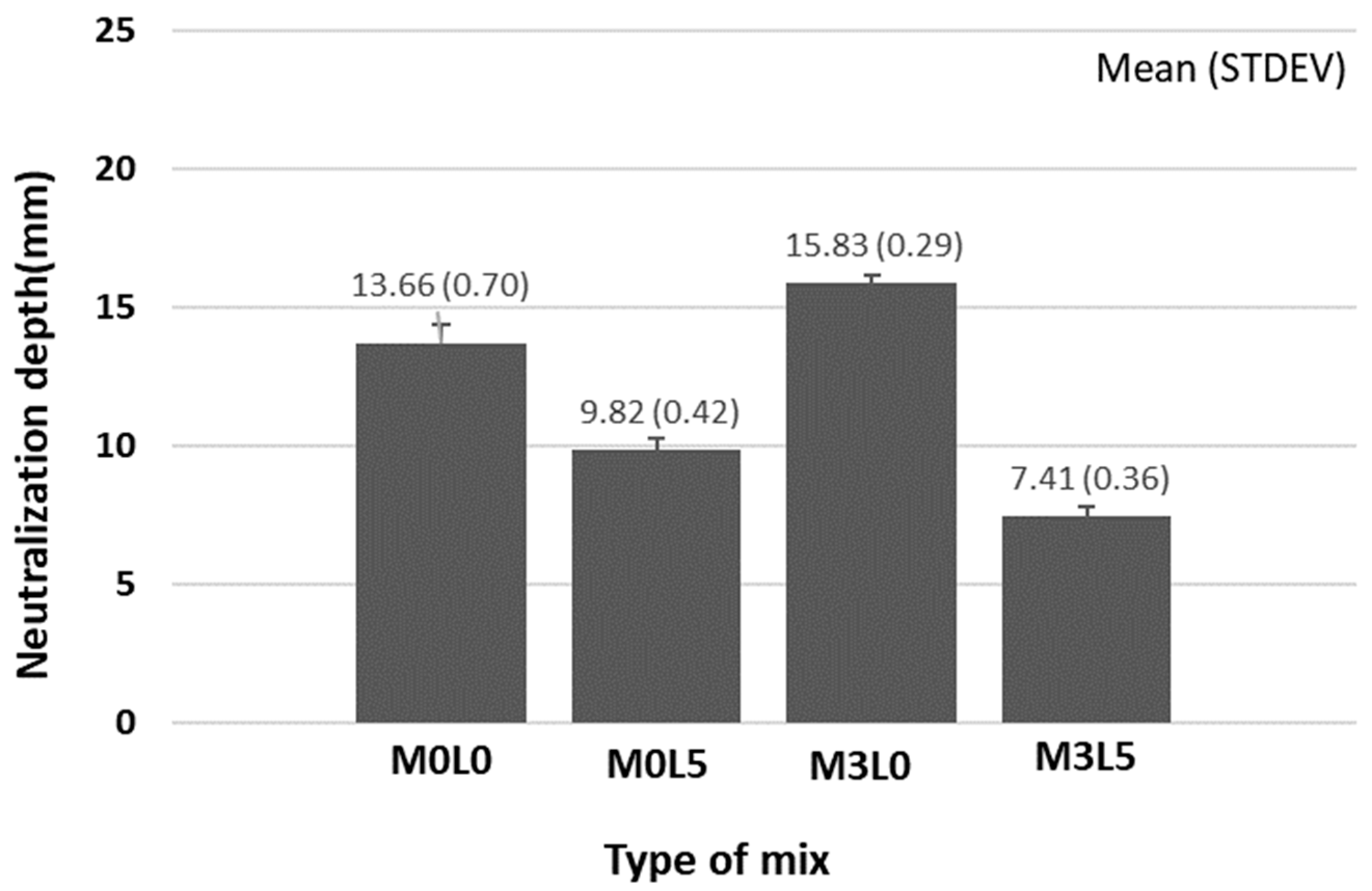
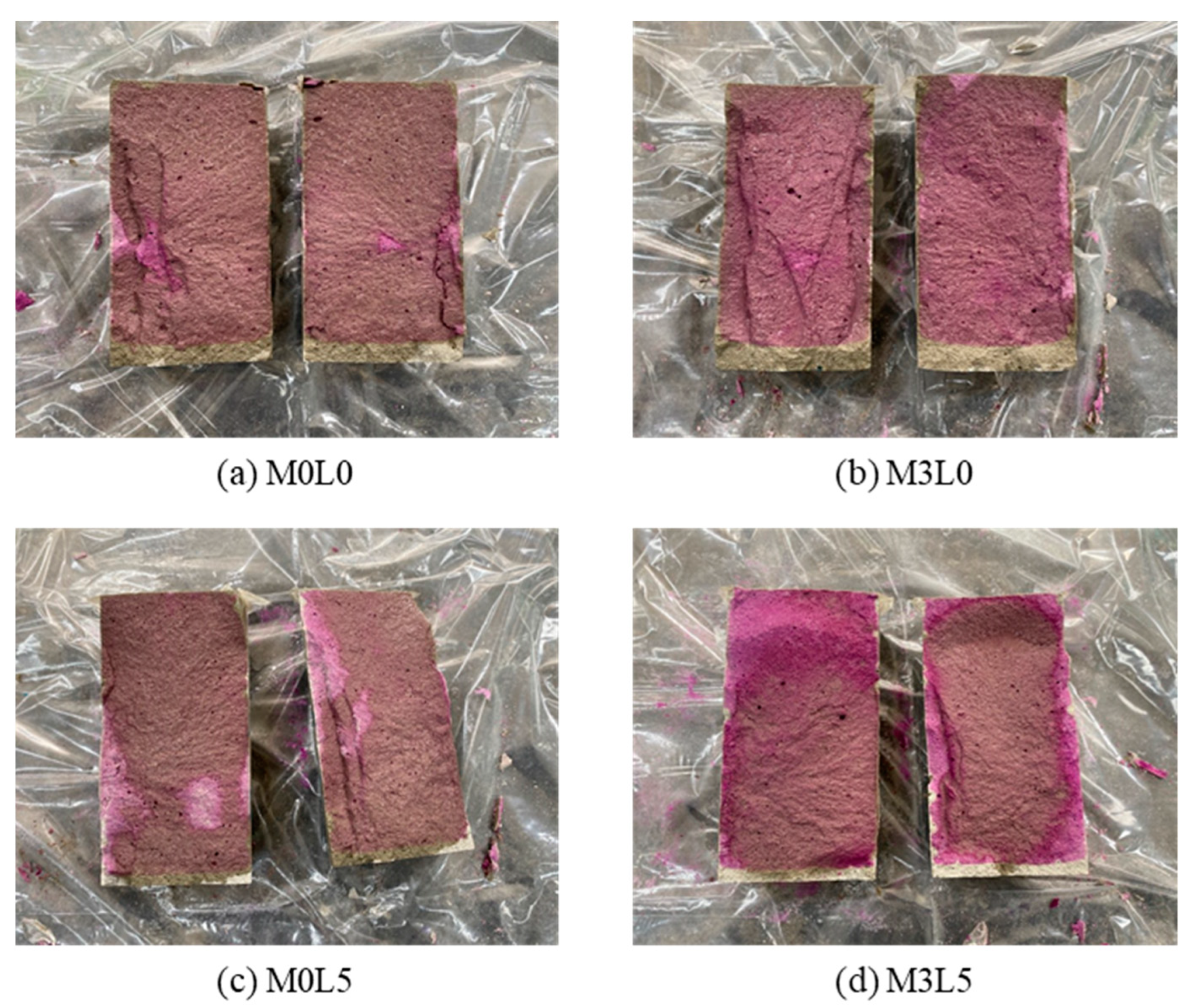
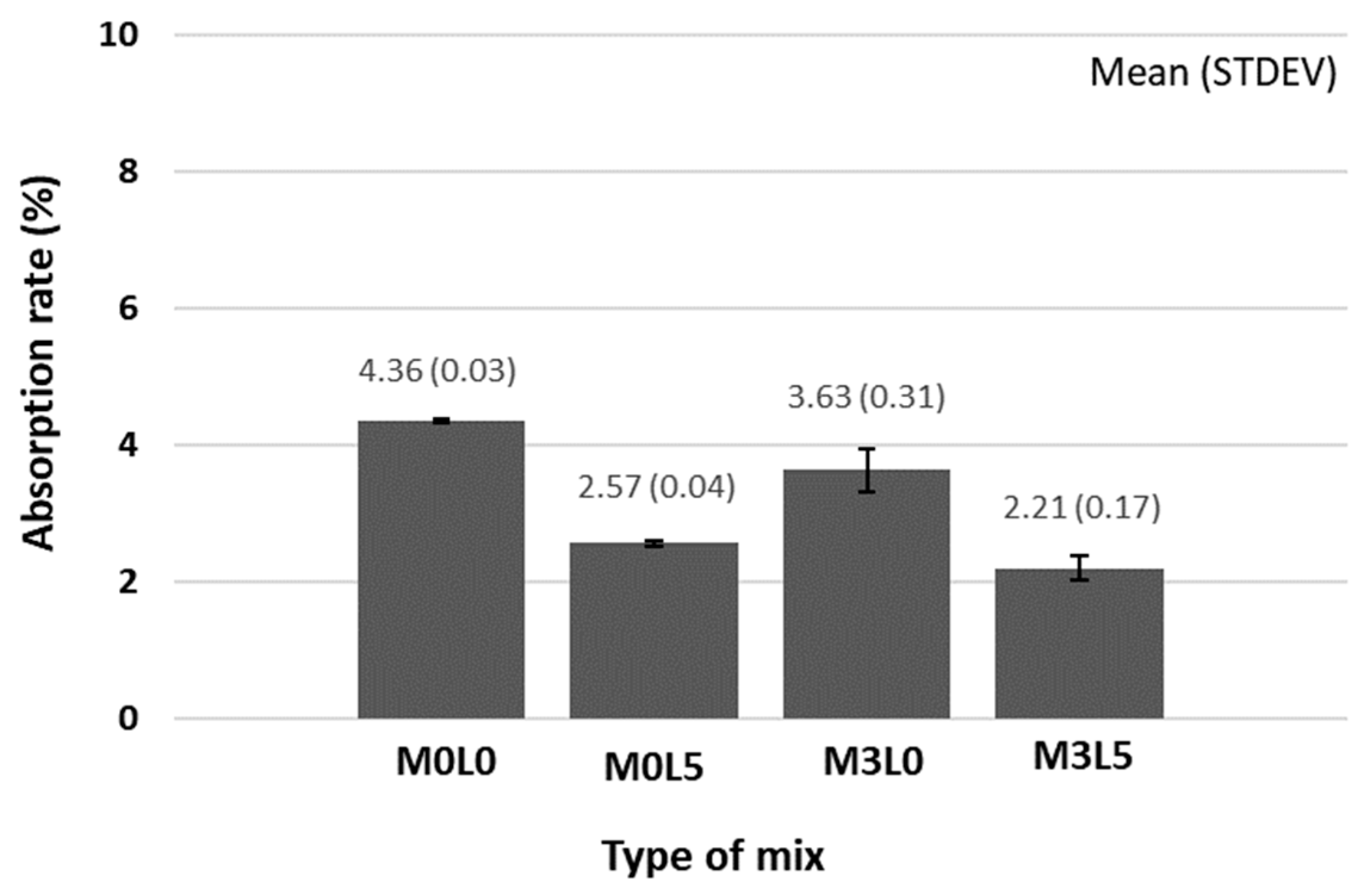

| Chemical Composition (%) | Blaine (cm2/g) | Density (g/mm3) | ||||||
|---|---|---|---|---|---|---|---|---|
| SiO2 | Al2O3 | Fe2O3 | CaO | MgO | K2O | SO3 | ||
| 13 ± 3 | 17.5 ± 3 | 3> | 50 ± 3 | 2.5> | 0.21 | 14 ± 3 | 5400 | 2.62 |
| No. | Size (mm) | Density (20 °C) | F.M |
|---|---|---|---|
| 6 | ≤0.3 | 2.62 | 1.95 |
| Properties | Values |
|---|---|
| Appearance | White |
| Shape | Acicular |
| Length | 0.4–0.6 mm |
| Transverse dimension | 25~150 µm |
| Maximum aspect ratio | 3~20 |
| Coefficient of expansion (mm/mm/°C ) | 6.5 × 10−6 |
| Density (g/mm3) | 2.9 |
| Water solubility (g/100 cc) | 0.0095 |
| pH | 9.9 |
| Solids Content (%) | Styrene Content (%) | Butadiene Content (%) | pH | Density (g/mm3) | Surface Tension (Dyne/cm) | Particle Size (Å) | Viscosity (cps) |
|---|---|---|---|---|---|---|---|
| 49 | 34 ± 1.5 | 66 ± 1.5 | 11.0 | 1.02 | 30.57 | 1700 | 42 |
| Type of Mix | W */B (%) | Total Water | Unit Weight (kg/m3) | Flow Value (mm) | |||||
|---|---|---|---|---|---|---|---|---|---|
| Mixing Water | 1:1.5 (Binder) | Wollastonite (B × 3%) | SB Latex Polymer (B × 5%) | ||||||
| Rapid Set Cement | Silica Sand | Solid | Water | ||||||
| M0L0 | 15.18 | 304.00 | 304 | 801 | 1202 | - | - | - | 200 |
| M0L5 | 12.05 | 245.02 | 193 | 813 | 1220 | - | 49.98 | 52.02 | 205 |
| M3L0 | 16.09 | 299.00 | 299 | 743 | 1115 | 56 | - | - | 200 |
| M3L5 | 14.75 | 268.41 | 222 | 728 | 1092 | 55 | 44.59 | 46.41 | 205 |
Publisher’s Note: MDPI stays neutral with regard to jurisdictional claims in published maps and institutional affiliations. |
© 2022 by the authors. Licensee MDPI, Basel, Switzerland. This article is an open access article distributed under the terms and conditions of the Creative Commons Attribution (CC BY) license (https://creativecommons.org/licenses/by/4.0/).
Share and Cite
Choo, Y.J.; Lee, G.H.; Lee, S.-J.; Park, C.-G. Effects of Wollastonite Fiber and Styrene–Butadiene Latex Polymer on the Long-Term Durability of Cement-Based Repair Materials. Materials 2022, 15, 5433. https://doi.org/10.3390/ma15155433
Choo YJ, Lee GH, Lee S-J, Park C-G. Effects of Wollastonite Fiber and Styrene–Butadiene Latex Polymer on the Long-Term Durability of Cement-Based Repair Materials. Materials. 2022; 15(15):5433. https://doi.org/10.3390/ma15155433
Chicago/Turabian StyleChoo, Yeon Jae, Geon Hee Lee, Su-Jin Lee, and Chan-Gi Park. 2022. "Effects of Wollastonite Fiber and Styrene–Butadiene Latex Polymer on the Long-Term Durability of Cement-Based Repair Materials" Materials 15, no. 15: 5433. https://doi.org/10.3390/ma15155433
APA StyleChoo, Y. J., Lee, G. H., Lee, S.-J., & Park, C.-G. (2022). Effects of Wollastonite Fiber and Styrene–Butadiene Latex Polymer on the Long-Term Durability of Cement-Based Repair Materials. Materials, 15(15), 5433. https://doi.org/10.3390/ma15155433





